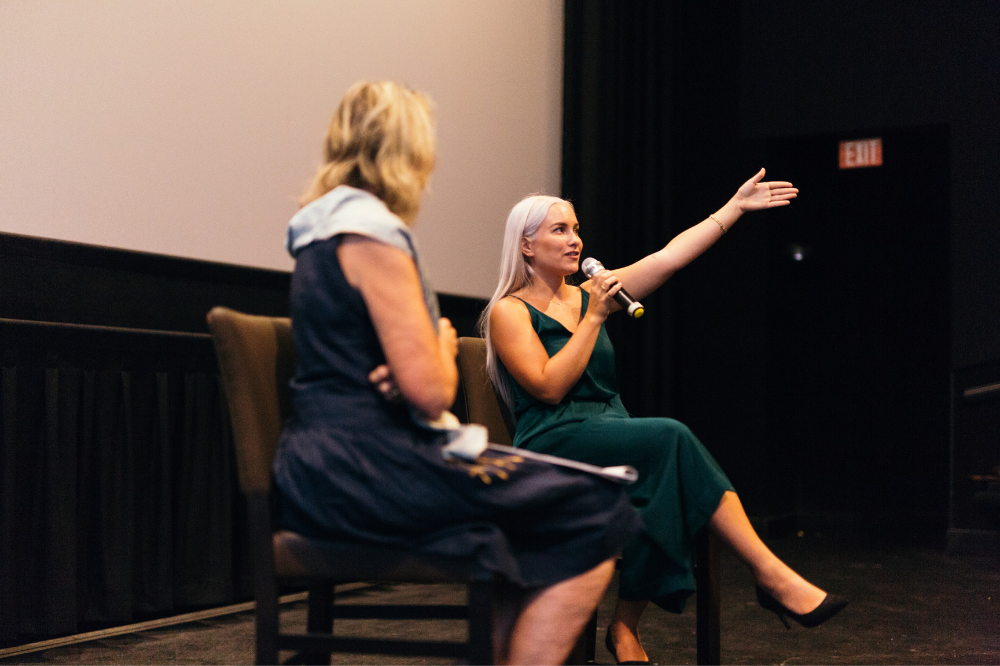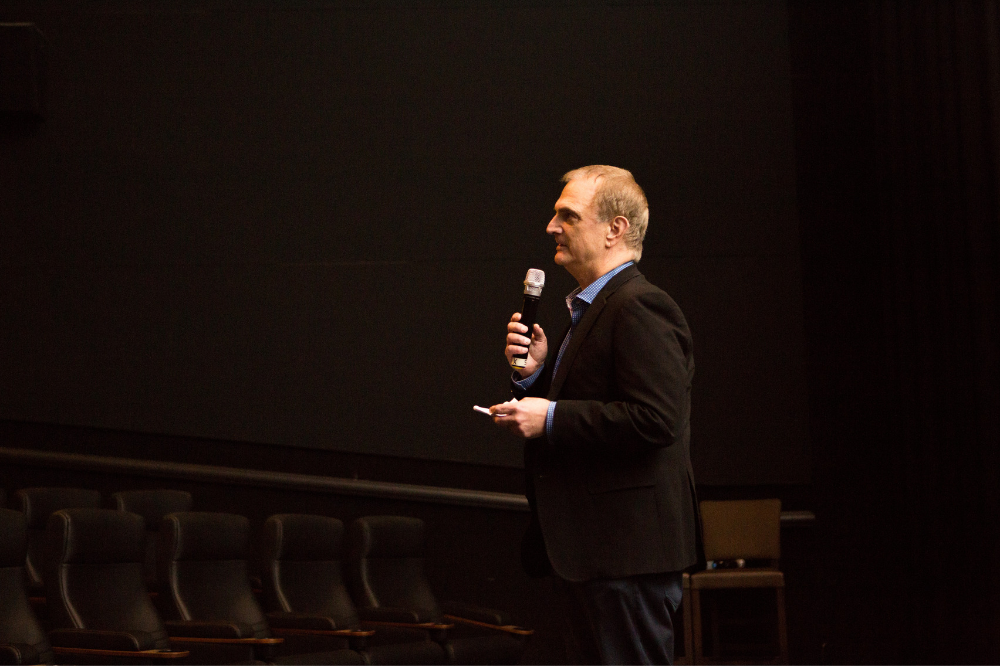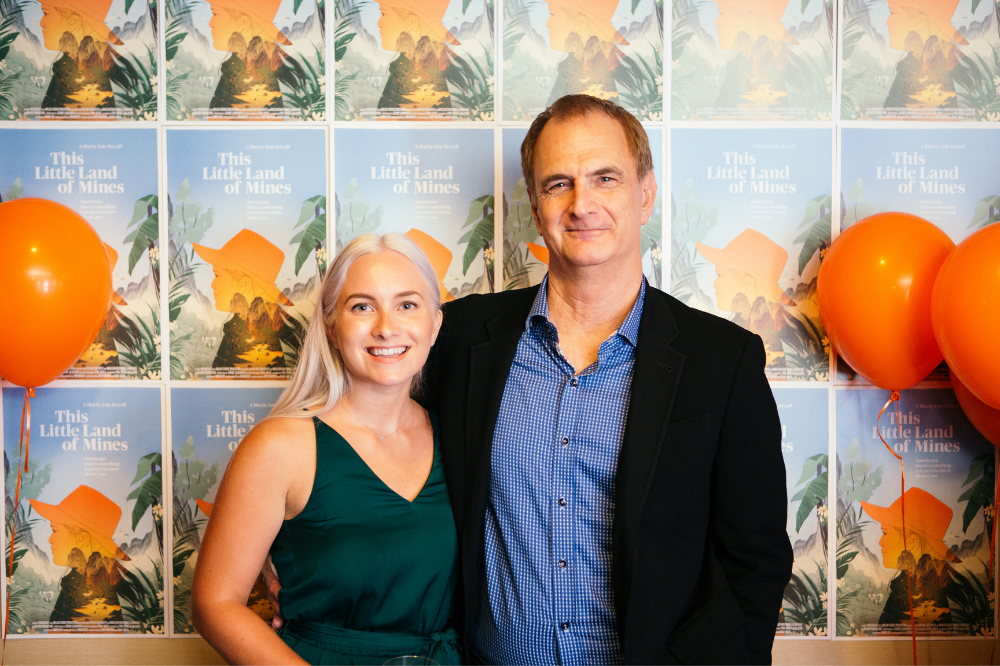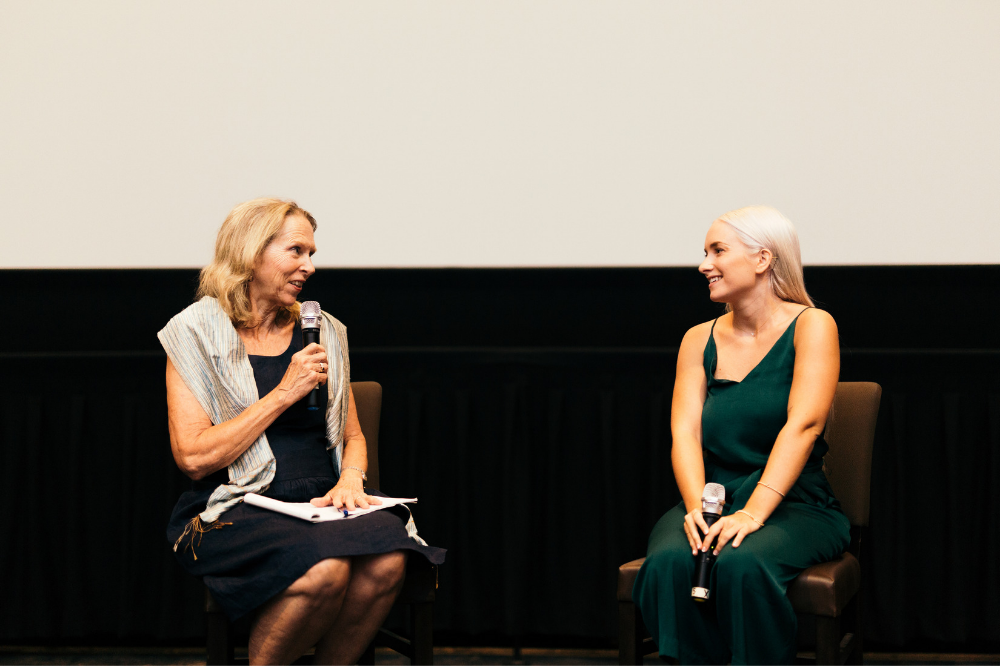“They were like butterflies, it was like they never slept,” said Mr. Vounta, recalling the bombs that the U.S. dropped on Laos from 1964 to 1973. Mr. Vounta is one of the voices featured in This Little Land of Mines, a film by Erin McGoff, a 2017 Student Fellow from American University. The film premiered at the Landmark Bethesda Row Theater on Thursday, July 18, 2019, to an audience of nearly 200 that filled the theater.
Throughout the course of the Vietnam War, the U.S. dropped 270 million bombs on Laos as part of the largest covert CIA operation in U.S. history. One third of the bombs dropped did not explode upon impact and 80 million unexploded ordnance (UXO) remained, of which around only one percent have now been detonated.
This Little Land of Mines explores the impact of the U.S.’s “secret war” in Laos during the Vietnam War on the lives of a group of Laotians who struggle with the physical and emotional traumas they continue to bear as a result of the U.S.’s incessant bombings throughout the nine year period.
“They let me into their lives,” McGoff said of the Lao people represented in the film. She said she wanted the film to be narrated by these individuals, rather than herself, to highlight their resilience and their voices.
The film begins with a speech from President Kennedy at a news conference in 1961. “My fellow Americans, Laos is far away from America, but the world is small,” he says.
Throughout the film, the stories of individuals like Mr. Vounta contrast with the remarks of politicians and news presenters, creating a tonal shift between their human stories and the global presentation of the conflict. Every eight minutes, the screen fades to black with loud noises mimicking the dropping of bombs, emphasizing that every eight minutes, the U.S. dropped one plane load of bombs on Laos on average, 24 hours a day for nine years.
“The film shows the discrepancy in American foreign policy with American values,” said Executive Producer Don Thompson in his introduction of the film. “It shows us this happened historically, and we can’t let it happen again.”
In the U.S.’s bombings on Laos from 1964-1973, one-tenth of Laos's population was killed. Lung Ki, who was born in 1955 and shares his story in the film, remembers when the B52 planes started bombing his country. “We didn’t know they would come to bomb us,” he says, looking slightly right of the camera. “Just the sound of an explosion could kill you,” he says, walking to the cave where he resided with his father. He explains that 17 to 18 families share the cave together.
He holds a torch of fire below his chin as it lights up his face. “I cry thinking about my life up there, and all the losses.”
The film offers a multi-character portrait of the impact of the bombings on different Lao individuals. In Xiangkhouang Province, Sao La, who has a house at the bottom of the mountain, recalls that when the bombs were dropping, she and her children couldn’t sleep in their house. “We had to run,” she says. “The bombs fell like rain.”
Individuals in Laos are working towards detonating the 80 million remaining UXOs. Phetsamay, a character in the film, and her husband, are both involved in this effort. They find around 10 to 20 bombs per day. Still, at this rate, it will take 2,500 years to rid Laos of UXOs, the film highlights.
In one scene, Phetsamay leans over in rice fields with her metal detector, searching for UXOs. She often worries about her children’s safety when they go to play in the rice fields. 40 percent of UXO victims are children. One woman shares the painful memory of her son’s death. Organizations like UXO Laos are working to clear more farmland in provinces. In Thakek province, those working with the organization found 116 large cluster bombs since 1999.
The camera closes up on Phetsamay’s eyes as she prays, the sound of bells in the background. “I want to detonate all the UXO in Laos,” she says.
In 2016, President Obama became the first U.S. president to visit Laos. The film details his visit, where he reflects on how many Americans are not aware of “this chapter of our history.” He underlines that the U.S. gave $90 million to clear up UXOs in Laos.
Questions remain as to whether this amount is enough without an explicit apology from the U.S. to the people of Laos. “Laos deserves the U.S. to give a formal apology,” said McGoff, speaking about next steps Americans can take. The country still suffers from a severe dearth of resources to deal with the insurmountable losses from the bombings. The manager of a medical clinic that serves Lao people injured by UXOs says that the clinic currently only has one oxygen machine, and needs many more.
“I am tired and there are still many bombs out there. I am doing my best,” Phetsamay says towards the end of the film, wading through the rice fields.
In the Q&A portion of the event, Pulitzer Center Contributing Editor Kem Sawyer joined McGoff on stage to discuss choices McGoff made in the film. McGoff emphasized that she wanted the film to highlight Lao voices, and so worked with a Lao co-producer who helped her conduct interviews in Lao.
Every aspect of the film contained an aspect of Lao culture, she explained. The soundtrack used the calls of birds native to Laos in the background, and the score included the voice of a Lao woman singing about the war.
“I wanted it to be narrated by Lao people, and not have the American voice,” she said. McGoff tried to learn Lao, but ultimately decided not to in part because she did not want to claim to understand the language or culture of those depicted in the film. “They lived a life I could never imagine.”
McGoff hopes the film will raise awareness about a war the U.S. kept secret for so long. “Tell people about it, write to your representative, get involved in NGOs [supporting the Lao people],” she told the audience.
This Little Land of Mines, a Mill Valley Film Festival official selection and nominee in the Stockholm Independent Film Festival for Best Feature Documentary, now picked up for distribution online by Journeyman Pictures, will continue to screen in Dallas, Vermont, Arizona, and California in the next months. McGoff also noted that the score for This Little Land of Mines was composed by Jeremy Zuckerman, best known for his score for the Avatar: The Last Airbender soundtrack. Find out more information about upcoming screenings and awards at www.thislittlelandofmines.com.
Nearing the end of the Q&A, McGoff reiterated the lasting impacts of the bombings on the Lao people and the need to hold the U.S. accountable in the future. “This may have happened 50 years ago, but we need to stay vigilant."









